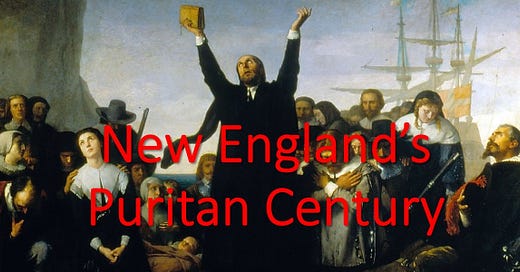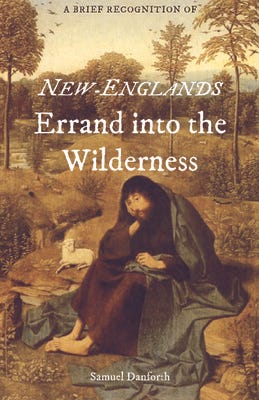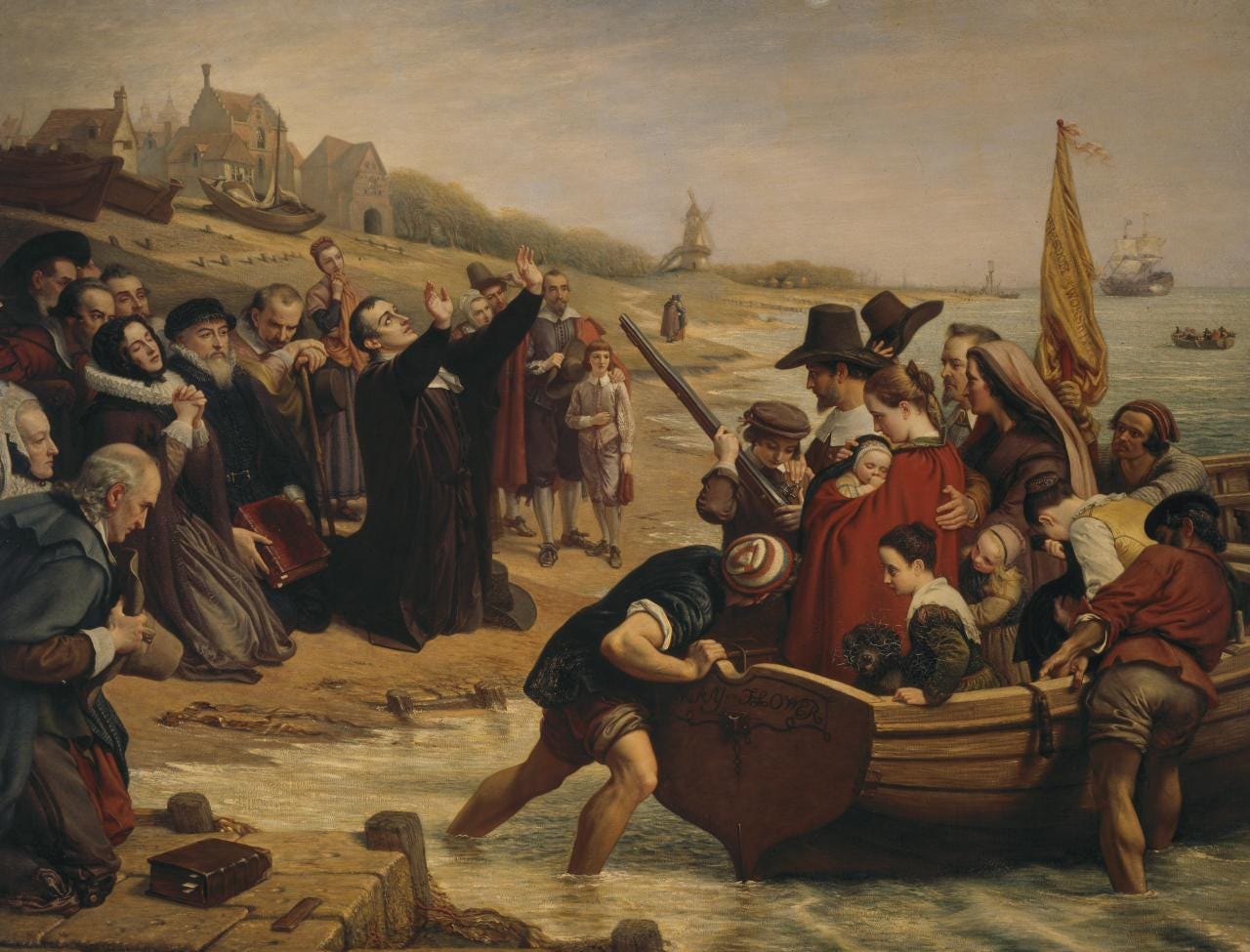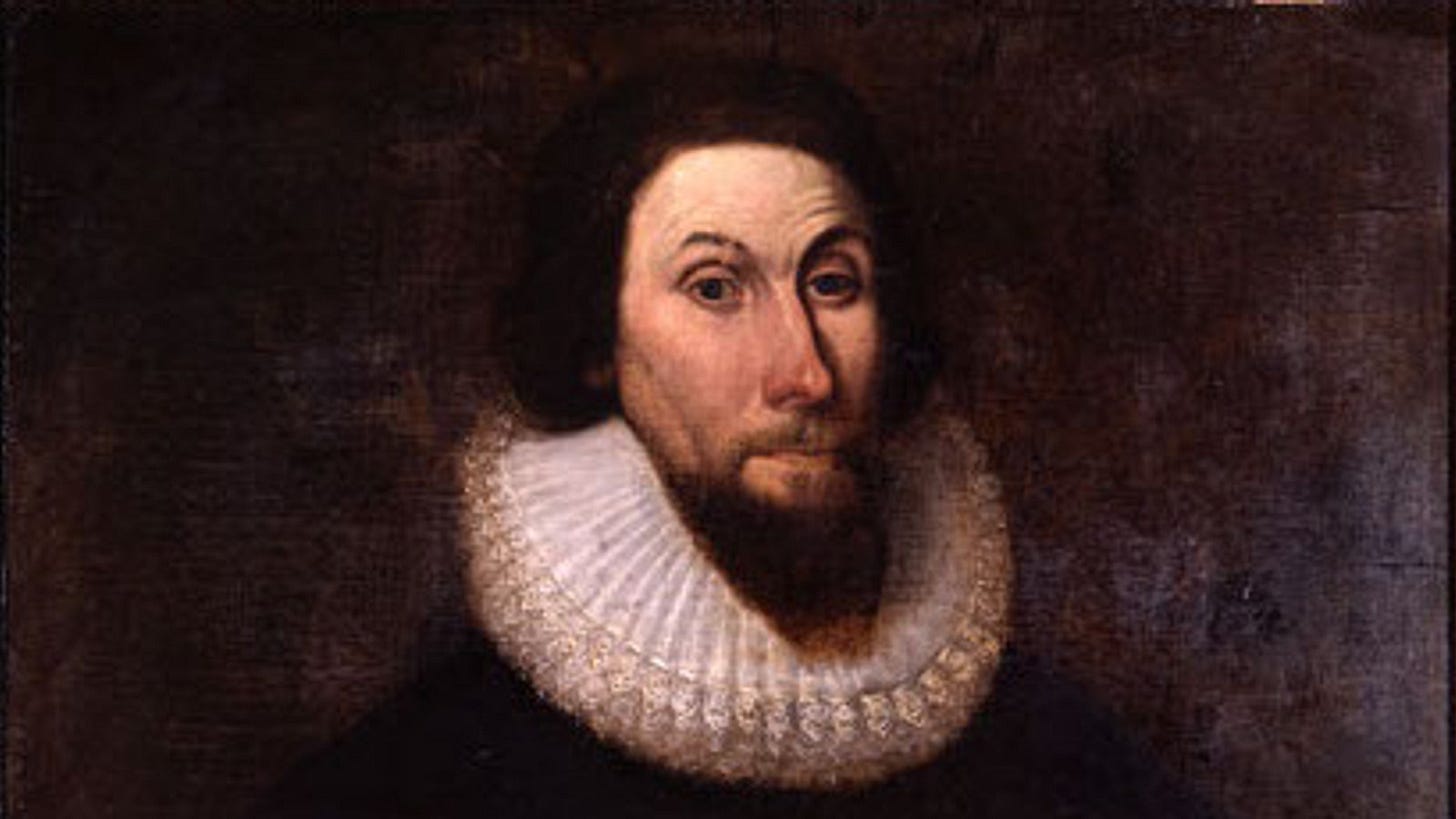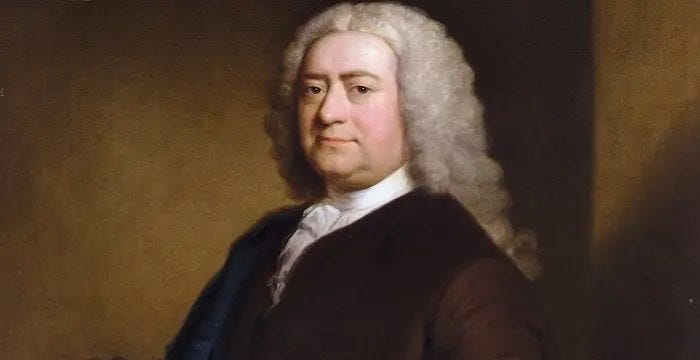Between the Arbella’s sailing (1630) and Cotton Mather’s death (1728) lies almost a century. Within that century, New England went from being a mere dream in the hearts of devout Puritans to a thriving province in England’s world-wide colonial system.
Although historians love to discern factions and conflicts and detail evolutionary changes to tell a better story, the over-all story of the first century of New England Puritanism was one of peace, continuity, and laying a solid foundation. At the close of this century, New England was still an essentially Puritan society. The story of New England’s Puritan century is not primarily about a vulnerable, religiously based colony being molded by London’s imperialistic power. Rather, the history of Puritan New England shows that their religious ideology gave them a special resilience against the eroding power of Anglicization. Although the state was ultimately out of Puritan hands (at least in Massachusetts) and the culture was beginning to be shaped by anglicized, “Atlantic-oriented” merchants, Puritanism remained strong. If we do not define Puritanism too narrowly, that is if we allow some diversity within a wider Puritan movement, then by the third generation in the wilderness, Puritan integrity had held.
That century can be broken down into three parts:
(1) The generation of John Cotton and Richard Mather, 1630-1661, from the founding to the Restoration: years of virtual independence and nearly autonomous development;
(2) The generation of Increase Mather 1662-1689, from the Restoration and the Halfway Covenant to the Glorious Revolution: years of struggle with the British crown;
(3) The generation of Cotton Mather, 1689-1728, from the overthrow of Edmund Andros (of which Cotton Mather was a part) and the new charter, mediated by Increase Mather, to the death of Cotton Mather.[1]
Generation I
It was a great and high undertaking of our fathers when they ventured themselves and their little ones upon the rude waves of the vast ocean that so they might follow the Lord into his land. A parallel instance not to be given except that our father Abraham from Ur of the Chaldees or that of his seed from the land of Egypt. … In the wilderness have we dwelt in safety alone, being made the subjects of most peculiar mercies and privileges. The good will of him that dwelt in the bush has been upon the head of those that were separated from their brethren. And the Lord has (by turning a wilderness into a fruitful land) brought us into a wealthy place. -- Increase Mather[2]
The importance of Samuel Danforth’s (1626-1674) famous May 11, 1670, election sermon, “A Brief Recognition of New England’s Errand into the Wilderness” has been exaggerated.[3] That particular sermon does, indeed, merely say that the Puritans ventured to New England for “liberty to walk in the faith of the gospel.” Danforth said little about broader aspirations for New England except to say that if they return to the consecration of the Great Migration, their adversaries will be amazed.[4]
However, it is a mistake to suggest that the Puritans did not have grand dreams for their City upon a Hill. John White, an English pastor writing to recruit colonists for Massachusetts at the very inception of the colony, demonstrated that they were indeed moving forward toward an evangelical goal. He emphasized that the purpose of planting New England was “the furthering of the gospel.” Their motivation was far from a felt need of the Puritans to flee from England to a refuge. On the contrary, White found that the chief objection to the enterprise is that the Puritans are needed in England to continue “the advancing of religion.” His answer: “Here my labors that way are not so needful in the land, because many others may put too their hands to the same work. In New England, there are none to undergo the task.”[5]
“A pure and undefiled religion was the great thing our ancestors had in their view when they cast their eye towards this wilderness for a habitation.” — Samuel Wigglesworth
The second generation testified to the positive goal that brought the founders to New England. Edward Johnson (1599-1672), in particular, emphasizes this theme in his 1654 Wonder-Working Providence of Sian’s Saviour in New England. For Johnson, New England was the training ground “to muster up the first of his forces in.”
Likewise, the pious merchant, John Hull, described New England as “a wine cellar for Christ to refresh his spouse in.” He believed that it was the example and writings of those refreshed in this wine-cellar that awoke “the whole nation” “to think of a general reformation,” making them “willing to enter into a war.” Hull believed the New England Jerusalem lit the fire that set off the English Civil War.[6]
Even the term “Great Migration,” an invention of the second generation, signals the religious motives of the founding generation. Of the many migrations of English people to the colonies in the early seventeenth century, the move to New England was relatively minuscule.[7]
Its greatness came from its meaning. Simply a yearning to escape would not have been a “great migration.” Thomas Shepard (1605-1649), answering those accusing the Puritan migrants of simply fleeing persecution replied that they came to New England so that “God will have his Church and the Kingdom of Christ go up also in these remote parts of the world, that his Name may be known to the heathens.” Cotton Mather’s contemporary, Samuel Wigglesworth wrote, “A pure and undefiled religion was the great thing our ancestors had in their view when they cast their eye towards this wilderness for a habitation.”[8]
The Great Migration was a demonstration of what sociologist Saskia Sassen describes as “the unmooring of identities from what have been traditional sources of identity, such as the nation or the village.” From England to New England, the Puritans were forming “new notions of community, of membership, and of entitlement.”[9] These new notions were based on Puritan covenant theology. The common experience of crossing the “rude waves” and fashioning new communities in the wilderness based on a common, vigorous faith made New England Puritanism a resilient cultural force, far more resilient than the English Puritanism, it left behind.
John Winthrop observed that his group of Puritan colonialists was gathered from all over England.[10] Though some churches transplanted en masse, Massachusetts was not the relocation of an English province to America. These people, who were joined by a common faith, had to be first formed into one people and create a new province. Relocation from their native England to (what to them was) the isolation of the “howling wilderness” changed Puritans by enabling them to apply their particular principles with a consistency unattainable in the old country. Puritanism ranks among the most rigorous products of the Reformation; the migrants to New England were drawn from the most dedicated and consistent of Puritans. The “free air” of America removed them from “the mollifying influences of an old and complex society.” They were able to begin anew where they could order all things according to God’s law, in both scripture and nature. “Their rigor was proportionally intensified.”[11]
John Winthrop (1588-1649)
To build a commonwealth on Biblical principles was, of course, their intention. However, they clearly had not worked out a careful blue-print of exactly how this society was to be built. Winthrop’s “A Model of Christian Charity” sermon speaks in generalities and of principles rather than specifics. This was prudent; unexpected innovations, like the multiplication of towns, had to be made. Church polity also called for innovations. The localistic reaction provoked by Charles I’s attempts to rescind local prerogatives for royal centralization was a factor.[12] Although each town had a great deal of self-rule, most New England towns shared certain characteristics. They either settled with a minister or aspired to get one as soon as possible.[13] The Puritans slipped into congregationalism with relative ease when they arrived in New England, many of them from or reflecting the model of church life they had seen (or heard of) in the Jacob-Lathrop-Jessy church or one of its sisters.
The Puritans sought to marry Christendom’s idea of a national church to a thoroughly Reformation conviction that the true church is the invisible church.
The church was both exclusive (in the sense of keeping certain people out) and established. They were what John Eliot described as an inclusive parish church around a core covenanted group. The true church was no less than the gathered “company of visible saints” than espoused by congregational purists.[14] The call of the church in the parish is to a “universal home-missionary enterprise.” Eliot advocated presbyterian-style Church councils and hoped, even as late as 1668, for the government to take the lead in reform.[15] The Puritans sought to marry Christendom’s idea of a national church to a thoroughly Reformation conviction that the true church is the invisible church. This tension between the parish church and the covenanted core, the true invisible church, was a creative tension.
New England’s churches could not have been identifiably “Puritan” if they did not exclude, in some way, someone. A thoroughly inclusive culture was unthinkable.[16] However, every resident was required to be under the church’s ministry. This combination of the exclusive and the national was one of their greatest achievements. By being exclusive, they helped preserve their particulars; by being national-that is, requiring, at first, everyone to attend one of the established churches, they guaranteed that those particulars would be presented to nonadherents – people who did not necessarily share their culture.[17]
That New England was intent on putting down permanent, independent roots shows in their determination not to be dependent on Cambridge-trained ministers. That six years into a wilderness, the Puritans founded a college is not only testimony to their high view of education but also their view of themselves as an independent commonwealth. Harvard was the institutional expression of their desire to diligently “keep up learning ... lest degeneracy, barbarism, ignorance, and irreligion do by degrees break in upon us.”[18] And yet, surely this is only half the story. There is no reason why they could not have sent their young men, like Increase Mather, to Cambridge or Trinity College in Dublin to prevent an “illiterate ministry.” The early founding of Harvard declared that they were not going to depend on external institutions to preserve their Puritan principles.
The City upon a Hill faced two nearly simultaneous and theologically related challenges: the antinomianism of Anne Hutchinson and the dualism of Roger Williams. Roger Williams “rejected the synthetic and conversionists attempts of Anglicanism and Puritanism to unite politics and the gospel.”[19] For Williams “spiritual peace” was “of a higher and far different nature from the peace of the place or people.”[20] A separation existed between the two realms and thus a separate ethic in his brand of spirituality. In this, he had stepped out of Puritanism. Among the many texts that represent the more holistic Puritan view is John Cotton’s The Bloody Tenent Washed and Jonathan Mitchel’s election sermon of 1671. In this sermon Mitchel, while admitting that “God may bring good out of evil,” insists that since the people’s highest good is “eminently bound up and concerned” with the glory of God’s Name, Rulers who “seek the glory of God ... must intensely seek the welfare of his people.”
John Cotton (1584-1652)
Antinomianism, too, represents a strand of dualism that would weaken or sever the organic unity that Puritans envisioned between the individual’s heart relation to God and life in the secular world. Both Williams and Hutchinson were seeking to introduce what H. Richard Niebuhr called the paradigm of “Christ and Culture in Paradox” into a society built on the conviction that “Christ” was “the Transformer of Culture.” It was precisely this Puritan insistence on engaging and transforming -- rather than escaping -- all of life that made Puritanism so resilient and influential. When Edward Johnson, in his Wonder Working Providence, described the kinds of errors into which Satan had tempted New England within its first generation, he described them in terms of separations: (1) dividing between the word and the word (pitting scripture against scripture), (2) separating Christ and his grace, (3) separating the Word of God from the Spirit of God, and (4) dividing Christ from his ordinances.[21] Johnson is so certain that the reader will recognize the error in such a division of propositional word from Spirit that he does not feel the need to analyze it to show where the error lies. In today’s theology, such Word-Spirit dichotomies are common, from Pentecostal “Word of Faith” teaching about the difference between rhema and logos to the Barthian “Nien” to natural revelation. Similarly, Thomas Weld describes the antinomians as if they were extreme dichotomizing Gnostics. Whether this is a fair portrait of the Antinomians or not, it does reflect a Puritan abhorrence of dichotomizing.[22]
Although Williams had some followers at Salem, his overall impact as a dissident in Massachusetts was small. In the long term, he seems to have contributed greatly to the stability of the Bible commonwealths by creating the “basin” into which the outcasts of Puritan New England could be sent. His Providence Plantations became a kind of safety valve for New England.
Anne Hutchison’s antinomianism appears to have been a far greater threat to internal stability. Winthrop, in his journal, admits that at one point the “great alienation of minds” was so sharp that “it began to be as common here to distinguish between men, by being under a covenant of grace or a covenant of works, as in other countries between Protestants and papists.”[23] Janice Knight sees the antinomian controversy and the strong measures Winthrop used to put it down as proof of the two warring parties in New England Puritanism: the spiritists or Cottonians, like John Cotton, who believed in immediate conversion, and the preparationists, like Winthrop himself, who believed in a “morphology of conversion.”[24]
The unanimity the ministers were able to muster during the crisis illustrates “the Bay Colony’s most startling accomplishment, fifty years of relative social peace.” Nevertheless, Knight is right to point out that initially there did seem to have been real differences. The differences, however, were, as Winthrop quotes Cotton, merely about different ways of “magnifying the grace of God”: one party focusing on justification and the other on sanctification.[25] However, these are the kinds of differences that either would not have arisen back in Old England or would not have caused as much controversy. Now that they were missing their old nemesis, William Laud’s Anglicanism, the differences among themselves grew in importance. They had to confront them. The legitimate differences between “preparationists” and “predestinarians” or between “intellectualists” and “voluntarists” were forced to the surface. Eventually, especially after Hutchison claimed immediate revelation for her beliefs, even John Cotton, her long-suffering pastor, condemned her, taking a leading role in admonishing the antinomians. The ministers’ unified action solidified an orthodoxy in Massachusetts and made New England Puritanism of the seventeenth century far more homogeneous than the Puritanism they left behind. When later challengers arrived on the shores of New England, like the Familists, they made little impact.[26] This is not to deny that there was diversity within New England Puritanism. But efforts to pit John Cotton, the evangelical, against the “preparationists” with their theology of the covenant are broken on the rock of the founders’ ultimate unanimity, John Wheelwright, an intemperate new arrival, notwithstanding. While there were probably different theological styles and emphases roughly along the lines Knight describes, they were differences within – not against -- Puritanism.
Kenneth Lockridge points to literacy as contributing to this homogeneity. The relatively high rate of literacy in New England in the founding generation and its continual rise in the following generations contributed to making New England a single place.[27] For the first generation, the Massachusetts press was centered at Cambridge, under the shadow of the Puritan Harvard. The speaking aristocracy was also a writing aristocracy for a largely Puritan readership.
John B. Carpenter (Ph.D, ThM, MDiv) is pastor of Covenant Reformed Baptist Church and author of Seven Pillars of a Biblical Church.
[1] A description of the distinctions of each generation can be seen in Samuel Torrey’s 1674 election sermon, “An Exhortation Unto Reformation.” Eleazer Mather’s “A Serious Exhortation” (Cambridge, Mass.: S.G. and M.J., 1676), along with Increase Mather’s preface to that published sermon, reflect the same consciousness of generational degeneration.
[2] Increase Mather for the 1679 Boston Synod, The Necessity of Reformation (Boston: John Foster, 1679), i.
[3] John B. Carpenter, “Puritan Missions as Globalization,” Fides et Historia 31:2 (Summer/Fall 1999): 104-6.
[4] Samuel Danforth, “New England’s Errand into the Wilderness,” (Cambridge, Mass.: S.G. and M.J., 1671), 9-10, 22.
[5] John White, The Planters Plea (London: William Jones, 1630), 399.
[6] E. Johnson, Wonder-Working Providence of Sian’s Saviour in New England (1654; Delma• N.Y.: Scholars’ Facsimiles & Reprints, 1974), 1. “Diary of John Hull,” (1857) in Puritan Personal Writings: Diaries, ed. Sacvan Bercovitch (New York: AMS Press, 1982), 168.
[7] Virginia D. Anderson, New Englo11d’s Generation: The Great Migration and the Formation of Society and Culture in the Seventeenth Century (Cambridge, U.K.: Cambridge University Press, 1991), 15-16.
[8] Thomas Shepard, “A Defense of the Answer,” in The Puritans: Sourcebook of Their Writings, eds. Perry Miller and Thomas H. Johnson (Mineola, N.Y.: Dover Publications, 2001), 120. Samuel Wigglesworth, An Essay for Reviving Religion: A Sermon delivered at Boston (Boston: S. Kneeland, 1733), 34.
[9] Saskia Sassen, Globalization and Its Discontents (New York: New Press, 1998), xxxii.
[10] John Winthrop, “A Model of Christian Charity,” in The Journal of John Winthrop, eds. Richard S. Dunn and Laetitia Yeandle (Cambridge: Belknap Press, 1996), 8.
[11] Perry Miller, The New England Mind: The Seventeenth Century (New York: Macmillan, 1939), 45.
[12] T. H. Breen, “Persistent Localism: English Social Change and the Shaping of New England Institutions,” The New England Quarterly vol. 32: 4.
[13] For example, the first article of Springfield, Massachusetts’ 1636 town charter, according to Alden T. Vaughan in The Puritan Tradition in America: 1620-1730, ed. Alden T. Vaughan (Columbia: University of South Carolina Press, 1972), 192.
[14] John Eliot, Communion of Churches (Cambridge, Mass.: Marmaduke Johnson, 1665), 1.
[15] F.J. Powicke, ed., “Some Unpublished Correspondence of the Revered Richard Baxter and the Reverend John Eliot,” Bulletin of the John Rylands Library, vol. 15 (Manchester, 1931), 174-76.
[16] Mark A. Peterson, The Price of Redemption: The Spiritual Economy of Puritan New England (Stanford: Stanford University Press, 1997), 173.
[17] See Darrett Rutman, Winthrop’s Boston: A Portrait of a Puritan Town, 1630-1649 (New York: Norton, 1965), 261.
[18] Jonathan Mitchell, “A Model for the Maintaining of Students and Fellows of Choice Abilities at the College in Cambridge” (c. 1663), Publications of the Colonial Society of Massachusetts 31 (Boston: Colonial Society of Massachusetts, 1935), 311.
[19] H. Richard Niebuhr, Christ and Culture (New York: Harper, 1951), 183.
[20] Roger Williams, The Bloody Tenet of Persecution (London, 1644), 25.
[21] E. Johnson, Wonder-Working Providence, 94-97.
[22] Thomas Weld, A Short Story of the Rise, Reign, and Ruin of the Anti11omin11s, Familyists, and Libertines that lnfect the Churches of New England (London: Parkhurst, 1692).
[23] John Winthrop, January 20, 1637 Journal entry, in Miller and Johnson, The Puritans, 130.
[24] Janice Knight, Orthodoxies in Massachusetts: Rereading Amercan Puritanism (Cambridge: Harvard University Press, 1994), 23-30.
[25] T. H. 13reen and Stephen Foste1 “The Puritans Greatest Achievement: A Study of Social Cohesion in Seventeenth-Century Massachusetts,” Journal of American History 60 (June 1973): 5. Winthrop, January 20, 1637, Journal entry, 133.
[26] Weld, Rise, Reign, and Ruin of the Antinomians ...
[27] Kenneth Lockridge, Literacy in Colonial New England: An Enquiry Into the Social Context of Literacy in the Early Modern West (New York: Norton, J 974), 21.

